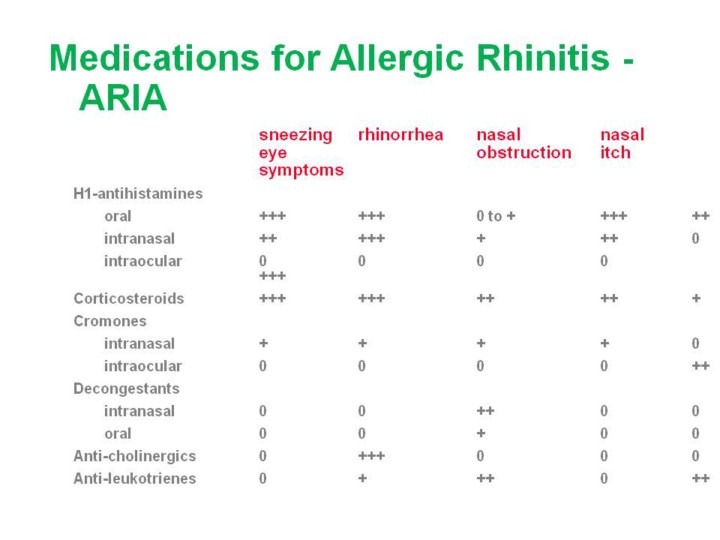| front |1 |2 |3 |4 |5 |6 |7 |8 |9 |10 |11 |12 |13 |14 |15 |16 |17 |18 |19 |20 |21 |22 |23 |24 |25 |26 |27 |28 |29 |30 |31 |32 |33 |34 |35 |36 |37 |38 |39 |40 |41 |42 |43 |44 |45 |review |
 |
Management combines allergen avoidance and pharmacologic therapy, with allergen immunotherapy added for refractory or severe cases. Intranasal glucocorticoids (INGCs) are the most effective single therapy for allergic rhinitis in most patients with significant or persistent symptoms. With this in mind, we favor the following approaches for specific patient groups: Children <3 years — For children <3 years, initial treatment depends upon both of the child's symptoms and the concerns of the parents/caregivers. For children <3 years with mild symptoms, we suggest a second generation antihistamines (Grade 2B). Cetirizine (approved for children ≥6 months), loratadine, and fexofenadine (both approved for children ≥2 years) are similarly efficacious and are available in syrups. If this is not effective or the child has prominent congestion, we suggest changing to an INGC with minimal systemic bioavailability and once-daily dosing (Grade 2B). Mometasone furoate and fluticasone furoate are approved for children ≥2 years of age. Intranasal cromolyn may be helpful for children with mild or episodic symptoms, whose parents are especially concerned about possible side effects, although the need for frequent dosing (one to two sprays three to four times daily) limits compliance.
|